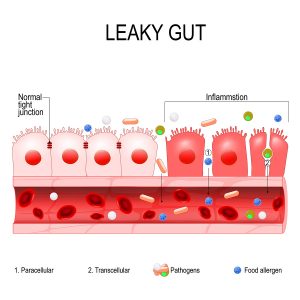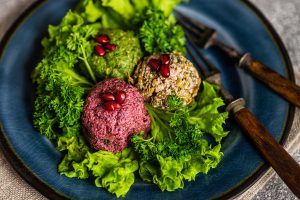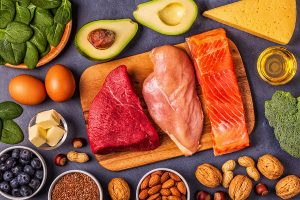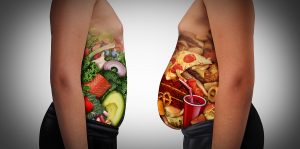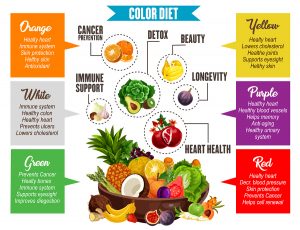Dr. Joel Kahn gave a lecture in Las Vegas in which he explained that fasting can prevent cardiovascular diseases. Dr. Kahn is a Clinical Professor of Medicine at Wayne State University School of Medicine. He spoke at the 27th Annual World Congress on Anti-Aging Medicine in Las Vegas. The conference took place from Dec. 13 to 15th, 2019.
According to the CDC cardiovascular diseases like heart attacks and strokes are hitting the middle age adults in large numbers. Part of the problem is obesity and diabetes, both of which cause an increase of cardiovascular diseases. Heart attacks, strokes, heart failure and other related cardiovascular conditions caused 2.2 million hospitalizations in the US in 2016. This resulted in 415,000 deaths and a health care cost of $32.7 billion.
Fasting can improve the risk for cardiovascular disease
Dr. Kahn asked whether fasting can reduce the aging pathways, build up resilience and protect the heart from aging and heart disease. In a few words: eat less, live more! He showed with slides that fasting can indeed do that. One heart catheterization study showed that a fasting group had only 64% coronary artery disease compared to a non-fasting control group with 76%.
Another study showed that fasting patients had only 10.3% diabetes compared to controls with 22.0%. With heart catheterization 63.2% of fasting patients had cardiovascular disease while 75.0% of non-fasting control patients did have lesions in their coronary arteries.
Animal experiments confirmed that fasting had beneficial effects on heart health as well. In rats, researchers showed that fasting reduced infarct size and inflammation. It also preserved left ventricular function. With mice fasting produced less inflammatory response and less tissue damage.
Alternate day fasting shows benefit in clinical human trial
A 2019 publication reported about a 4-week randomized clinical trial on 60 healthy non-obese human subjects. The effect of alternate day fasting was compared to controls. On average there was a 37% calorie reduction in the alternate fasting group. The fasting group had improved fat mass, improved fat-to-lean ratio and cardiovascular markers. There was a reduction of age-associated inflammatory markers and low-density lipoprotein.
Fasting mimicking diet
A newer form of fasting is the fasting mimicking diet (FMD), which was invented and researched in depth by Dr. Valter Longo. Both animal experiments as well as human trials have shown that the FMD is safe and effective. It can be followed 5 days out of every month and will lead to some weight loss, an increase of telomeres, stem cells and lowered inflammatory markers.
My own experience with the fasting mimicking diet
My wife and I heard about the FMD from Dr. Longo when he spoke about it at the 2017 Anti-Aging Conference in Las Vegas. We immediately started the FMD in December of 2017 and have done it every month for 5 days since. But we never ordered the expensive meal kit. Instead, we calculated calories and use regular food to do the calorie-restricted diet. We eat 600 to 700 calories every day during the FMD days. In between we have unrestricted calories, but we noticed that we are more careful about our meal choices. I find that the result of the FMD is more energy, an improved sleep pattern and an easier way to keep my body-mass index in the 21.0 to 22.0 range. Here is a description of the effects of the FMD.
Use of FMD in high-risk patients
Dr. Khan said that the FMD is an ideal diet that the high-risk population of the US should use. 34% of the US population has a compromised metabolic condition. They are obese and at a high risk to develop diabetes. But on the FMD they gradually lose abdominal obesity, lower their cholesterol and triglycerides levels, which otherwise causes a high risk for heart attacks and strokes. The fasting blood sugar is lowering reducing the risk to get diabetes. The systolic and diastolic blood pressure comes down. And the C-reactive protein, which is a general inflammatory marker, becomes lower.
In non-obese patients the main effect of the FMD is a stimulation of stem cell release and telomere elongation. This postpones the aging process and with it delays the onset of cardiovascular diseases.
Conclusion
Dr. Joel Kahn gave a lecture at a Las Vegas conference that fasting can prevent cardiovascular diseases. He compared alternate day fasting with the fasting mimicking diet (FMD). The FMD was more effective in reducing danger markers, abdominal girth measurements and blood markers of cardiovascular diseases. Ultimately, he said, it was easier to follow an FMD where you only reduce your calorie intake to 600 to 700 calories per day for 5 days in one month. In those who are wanting to do this just for good health, the FMD increases stem cells and elongates telomeres. This postpones the aging process and keeps a person younger for longer. At the same time, it delays the onset of cardiovascular diseases.

